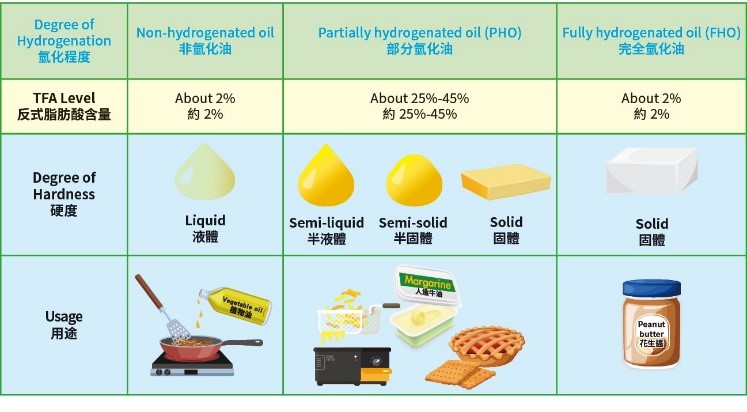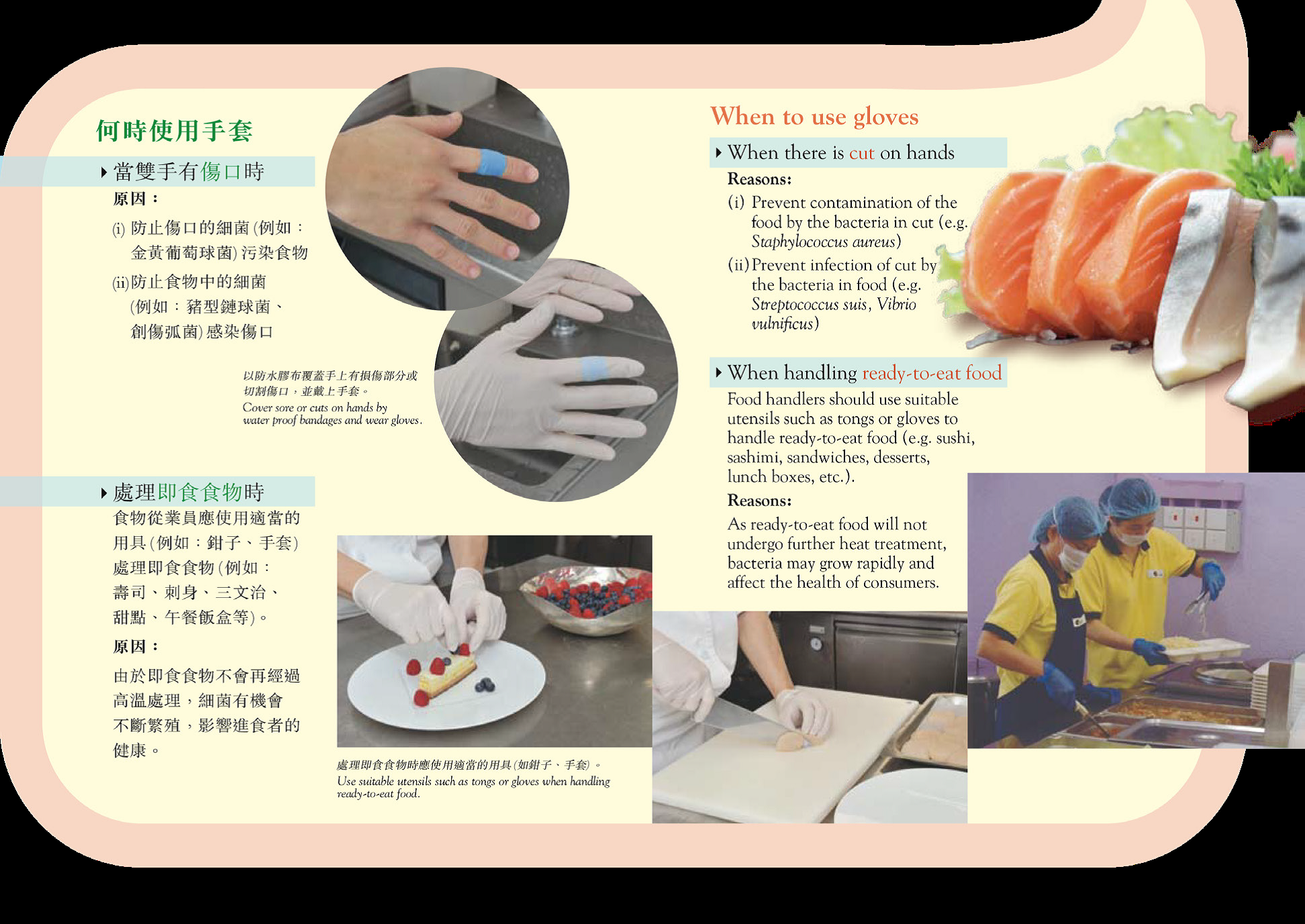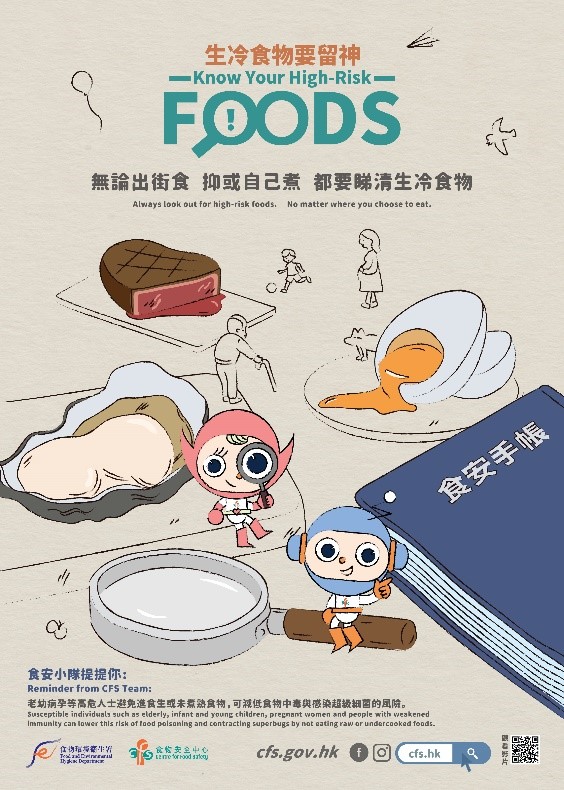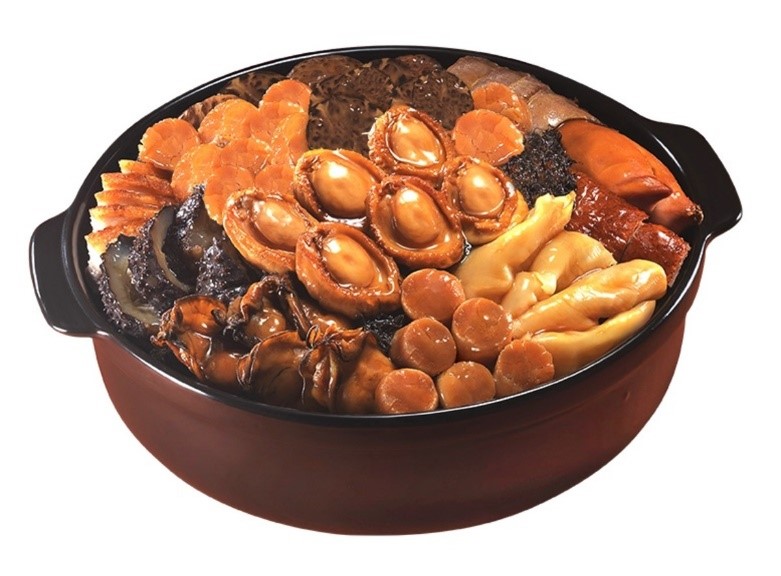
Feature Article
Food Poisoning Caused by Salmonella in Sandwiches Containing Eggs
Sandwiches are popular food items. They can be easily prepared with a wide variety of ingredients. Have you ever paid attention to the food safety issues relating to the consumption of sandwiches?
Food Poisoning Outbreak
In May 2020, there was a large-scale food poisoning outbreak involving a local brand of sandwiches. A total of 99 cases were reported with 236 persons affected. According to the Centre for Health Protection of the Department of Health, the victims suffered from abdominal pain, vomiting, diarrhoea and fever after consuming egg-containing sandwiches purchased from different retail shops in Hong Kong. Of the people affected, 51 were admitted to hospitals, including one requiring intensive care. Stool specimens of 37 affected persons were tested positive for Group D Salmonella. Two egg-containing sandwich samples taken from a retail outlet were also found to contain Salmonella.
Causes of Food Poisoning
Field investigations in the food factory and retail outlets concerned revealed that a number of factors might account for the food poisoning outbreak, including:
- cross-contamination of cooked ingredients by raw ingredients as they were handled on the same working table;
- inadequate hand hygiene facilities as food handlers shared the same towel for drying hands throughout the day without replacement;
- prolonged exposure of packed sandwiches to improper holding temperature. The packed sandwiches were delivered to retail outlets in various districts in Kowloon and the New Territories West in the morning round and then to the Hong Kong Island in the afternoon round, all the way carried by a single vehicle without any temperature control facilities. Sometimes, unsold sandwiches were transported between retail outlets for replenishment of stock, thus further increasing the delivery time; and
- improper storage and labelling of finished products. During investigations, sandwiches in a retail outlet were found stored in refrigerators at temperatures between 19℃ and 20.7℃. There was also no expiry date or production date on the package of the sandwiches for reference by the staff or customers.
Measures to Reduce Food Poisoning Risks Posed by Sandwiches
As a rule of thumb, sandwiches delivered to retail outlets or placed in storage should be kept out of the temperature danger zone (i.e. 4°C to 60°C) to limit the growth of microorganisms during transport and storage. Sandwiches left at room temperature for more than four hours should be discarded. When preparing food, food handlers should maintain hand hygiene and handle raw and cooked food separately to avoid cross-contamination.
After learning the incident and the investigation findings, the Centre for Food Safety (CFS) has instructed the food factory and the retail outlets to immediately stop the sale of all affected sandwiches. The CFS has arranged health education on food safety and hygiene for the staff concerned and requested them to clean and disinfect the affected premises thoroughly. It has also issued press releases urging the public not to consume the sandwiches in question. No new cases were reported after preventive and control measures were implemented.
Key Points to Note
- Salmonella is a common food poisoning microorganism that can cause severe illnesses.
- Sandwiches are high-risk food items because their preparation often involves manual handling. The risks of food poisoning may increase if sandwiches are contaminated by food handlers or other raw or undercooked ingredients, or stored improperly for a prolonged period of time.
- To prevent food poisoning outbreaks, food handlers should observe the Five Keys to Food Safety.
Advice to Trade
- Plan the production schedule and process ahead to avoid overproduction or preparation of food too far in advance.
- Food and ingredients should be kept at a proper temperature during storage and transport.
- Operators of food factories should provide proper hand washing facilities (e.g. liquid soap, paper towels) and a clean workplace with separated areas for preparation of raw and cooked food.
Readers' Corner
Learn about Partially Hydrogenated Oils (PHOs) ― the Hidden Heart Attacker
Partially hydrogenated oils (PHOs) are the primary source of industrially-produced trans fatty acids (IP-TFAs), which are targeted for elimination from the global food chain by the World Health Organization (WHO). Do you know that PHOs could be hidden in many processed foods? To name a few, PHOs can be found in oils for deep frying crispy chips, and margarine/vegetable shortenings for making puff pastries and flaky biscuits.
This article is an effort to explain a thing or two about PHOs, a hidden attacker which should be kept at bay for your heart health.

Figure 1: Modification of liquid oils with different degrees of hydrogenation (from partial to complete) produces fats of different hardness (from liquid to solid) for various applications. During hydrogenation, high levels of IP-TFAs (usually 25% to 45%) may result in PHOs
PHOs Are Industrially Produced for Turning Oils into Fats for Specific Product Applications
PHOs were first introduced into food supply in the early 20th century as an economical replacement for oils and fats, including animal oils and fats with a high content of saturated fatty acids (SFAs) (e.g. butter, lard, beef tallow) and vegetable fats (e.g. cocoa butter). A vast range of PHO products have been developed through hydrogenation, an industrial process which modifies oils and fats to suit the desired applications in food production. By controlling the various elements in the process (types of oil, hydrogen pressures, temperatures, catalysts, etc.), a liquid oil is turned into a semi-solid or solid fat at room temperature through hydrogenation (Figure 1).
During hydrogenation, double bonds in cis unsaturated fatty acids are partly converted into SFAs and partly into trans unsaturated fatty acids (i.e. TFAs). Incomplete hydrogenation (i.e. some unsaturated fatty acids remain in the oil) produces a liquid, semi-solid or solid PHO, whereas complete hydrogenation (i.e. all fatty acids are saturated) produces a waxy fat-like, fully hydrogenated oil at room temperature. The TFAs formed during hydrogenation can increase the melting point, shelf life and flavour stability of the hydrogenated oil.
The versatile semi-solid to solid PHOs are used in the production of many foods, such as different forms of margarine soft to hard in texture, and compact or airy baked goods like biscuits and cakes. PHOs also help create layers in puff pastries and pies. They give cookies and potato chips a crispy mouthfeel. Solid PHOs can add shininess to doughnuts during deep-frying and prevent migration of liquid oil to their coatings and/or packages.
The Crux of Banning PHOs Is Their High IP-TFA Levels
The use of PHOs in the food industry has become popular because of their low prices compared with natural animal and vegetable fats and the longer shelf life of their products. PHOs were once believed to be a healthier alternative to animal and vegetable fats high in SFAs, which would increase cholesterol levels and the incidence of cardiovascular diseases. Decades later, there is now growing evidence from scientific research that the consumption of IP-TFAs from PHOs is harmful to health and significantly increases the risk of coronary heart disease.
IP-TFAs not only increase the low-density lipoprotein cholesterol (“bad” cholesterol) but also reduce the high-density lipoprotein cholesterol (“good” cholesterol). The WHO suggests that IP-TFAs are not part of a healthy diet and have to be avoided. To protect the heart health of consumers, countries like the USA, Canada and Singapore have banned the use of PHOs in food products, whereas the member states of the European Union have set limits on IP-TFAs in food.
Reduce Dietary PHO Intake for Our Heart Health
It requires the concerted effort of traders and consumers to limit IP-TFAs in our diet. PHOs are totally replaceable. Food traders should consider using healthier oils and fats that contain as little SFAs and as much unsaturated fatty acids as possible in reformulating food products. SFAs should only be used for limited applications where there is no alternative. For margarine and vegetable shortenings, PHO-free ones should be sourced.
Consumers should maintain a balanced and varied diet comprising a wide variety of fruits and vegetables and consume less high-fat foods. During cooking, use oils and fats sparingly with reference to the food pyramid. Always choose healthier foods whenever possible. Last but not least, make good use of the nutrition label to choose prepackaged foods lower in SFAs and with no TFAs.
Spot Check
Importance of Proper Use of Disposable Gloves in Food Handling
With the current development of the COVID-19 pandemic in Hong Kong, more and more restaurant employees choose to use disposable gloves at work. There are concerns whether disposable gloves are being properly used.
It should be noted that improper use of gloves is unhygienic and will increase the chance of cross-contamination, as gloved hands can take up bacteria like bare hands. Even worse, it will give food handlers a false sense of security against infections.
When wearing disposable gloves to handle ready-to-eat food, use clean ones to prevent contamination. One should wash hands properly before wearing and after removing gloves. Gloves intended for single use should not be reused.





Disposable gloves should be changed frequently in the following situations:
- Change of work or work station:
- If cleansing is suddenly required during preparation of ready-to-eat food, food handlers should wash their hands thoroughly and wear new gloves after cleansing to continue food preparation.
- If food handlers need to refill food during packaging of lunch boxes, they should wash their hands thoroughly and wear new gloves after taking the containers with new food before proceeding with packaging.
- When the gloves are soiled, such as:
- after touching raw food or cooking utensils
- after coughing, sneezing or blowing one's nose
- after touching the nose, hair or other parts of the body
- after eating or going to the toilet
- The gloves are torn.
- Regular replacement during work (such as every half hour or hourly).
Remember that wearing disposable gloves cannot replace hand washing. Where possible, arrange designated staff to handle food and general staff members to share other duties such as handling payment or waste and cleaning to further enhance food safety.
Health Advice for Frozen Food Handlers on the Prevention of COVID-19
In view of the detection and isolation of live SARS-CoV-2 coronavirus from the outer packaging of imported frozen foods in Mainland China, people frequently handling frozen food should be alert of the relevant risk of infection. The CFS has drawn up a list of Health Advice for Frozen Food Handlers on the Prevention of COVID-19 and recommended frozen food handlers to adopt the following measures:
- Practise good personal hygiene, such as washing hands with liquid soap and water and rubbing hands for at least 20 seconds before and after handling food, and after cleansing, handling refuse and visiting the toilet.
- Check the body temperature daily before working. If you are suffering or suspected to be suffering from an infectious disease or have developed symptoms of an illness, you should stop working, wear a surgical mask and seek medical advice promptly.
- When on duty, put on a surgical mask, eye protective equipment (e.g. a face shield), gloves and a gown.
-
Ensure that the work environment is adequately ventilated and the drainage system is functioning properly.
-
Step up cleansing of the work environment and maintain regular disinfection by applying 1:99 diluted household bleach (mixing 1 part of bleach with 99 parts of water). Quaternary ammonium compounds can be used to decontaminate food contact surfaces, containers and food trays. Cleaning surfaces with alcohol-based disinfectants (ethanol, propan-2-ol, propan-1-ol) at concentrations of 70-80% with one-minute exposure time can also significantly reduce the infectivity of enveloped viruses like SARS-CoV-2.
-
While it is most important for food handlers to maintain hand hygiene, the disinfectants suggested above may be used to disinfect food packing surfaces if needed.
-
Ensure adequate social distancing at the workplace, such as assigning staggered working hours and flexible mealtimes to minimise direct face-to-face encounters among the staff
The related health advice has been uploaded to the CFS website (www.cfs.gov.hk/covid19). Food traders are advised to read it carefully and share the information with frozen food handlers. They should also facilitate employees suffering from an infectious disease or with symptoms of an illness to seek medical treatment promptly, including the testing for COVID-19 if necessary.
The CFS will continue to monitor the epidemic situation and stand firm with the trade to fight the virus. We believe that the obstacles can be overcome and brightness will return after the gloom.
Updates on CFS
Food Safety Day: Eat Safe! Know Your High-risk Foods

Our smart readers may have learned from the previous issue that the CFS has adopted "Eat Safe! Know Your High-risk Foods" as the theme of Food Safety Day 2020. High-risk foods here refer to “raw and cold food”, which is a loose description of raw or undercooked food items. Some common food products may contain raw or undercooked ingredients, for examples, mango pudding with raw eggs, smoked salmon sandwiches and congee prepared with undercooked beef.
Talking about "raw and cold food", do you know that four population groups are more susceptible to these high-risk foods and should be more alert to their health risks?
What Are the Susceptible Groups?
- Pregnant women
- Infants and young children
- The elderly
- People with weakened immunity
This year, the CFS has prepared a set of leaflets titled "Know Your High-risk Foods" to raise public awareness of the risks of "raw and cold food" to the four susceptible groups, with a view to preventing food poisoning and more serious complications.
In this issue, we will discuss the safety risks of "raw and cold food" to two susceptible groups, namely pregnant women and infants and young children.
Pregnant Women
Pregnant women are more susceptible to food poisoning because their immune systems change during pregnancy and their unborn babies’ immune systems are still in development, which can increase the risk of premature delivery or miscarriage.
Infants and Young Children
Infants and young children are especially vulnerable to foodborne illnesses (also known as food poisoning) and related health complications. This is because their immune systems are still developing and they cannot fight off infections as effectively as adults. Infants and young children also produce less stomach acid to kill harmful bacteria, thus having a greater risk of infections with foodborne bacteria.
"Know Your High-risk Foods" Leaflets
- Food Safety Advice for Infants and Young Children
- Food Safety Advice for Pregnant Women
- Food Safety Advice for the Elderly
- Food Safety Advice for People with Weakened Immunity
For more information on the above, please visit the following webpage:
https://www.cfs.gov.hk/foodsafetyday/

Food Safety Day 2020
Briefing of Activities
Roving Exhibitions on Food Safety
To step up publicity on food safety, the CFS organises thematic exhibitions in shopping centres of public or private housing estates, government offices or markets managed by the Food and Environmental Hygiene Department. There are exhibition boards on various food safety and nutrition topics, including the Five Keys to Food Safety, Nutrition Labelling, Trans Fat, Organic Food, Genetically Modified Food and Natural Toxins in Food to enhance public knowledge on how to make safe and suitable food choices. The staff on site will show educational videos and distribute leaflets and souvenirs to visitors during the exhibitions.
Four roving exhibitions were held at the following venues in July and October 2020
| Date | Venue | Theme |
| 3 July 2020 | Causeway Bay Market | Nutrition Labelling |
| Genetically Modified Food | ||
| Acrylamide in Food | ||
| 9 July 2020 | New Wan Chai Market | Five Keys to Food Safety |
| Prevention of Cross-contamination | ||
| Enhance Food Traceability, Strengthen Food Safety | ||
| 6 October 2020 | Kowloon City Market | Nutrition Labelling |
| Acrylamide in Food | ||
| Trans Fat | ||
| 9 October 2020 | Sha Tin Government Offices | Five Keys to Food Safety |
| Prevention of Cross-contamination | ||
| Organic Food |
Updated arrangements of the exhibitions will be announced regularly. Members of the public are welcome to visit the following website (https://www.cfs.gov.hk/english/whatsnew/whatsnew_act/whatsnew_act.html) for more details.
For enquiries, please contact the CRU of the CFS at 2381 6096.
Upcoming Activities
Seasonal Food Health Talk - Poon Choi

"Poon choi" is a distinctive local dish popular among Hong Kong people. With the approach of autumn and winter, we will soon welcome the arrival of more traditional Chinese festivals. Many restaurants see this as an opportune time to prepare "Poon choi" or offer it for sale to attract customers. There is also an increasing number of groups interested in organising "Poon choi" feasts. As "Poon choi" has a great variety of food ingredients and its preparation is complicated and time-consuming, the food safety risks involved are relatively high. To avoid these risks, food handlers should pay attention to various risk factors when preparing the dish. In this regard, the CFS presents food safety talks on the preparation of "Poon choi" for the trade every year. Restaurants will receive an invitation letter and an enrolment form listing the dates, time and venues for the talks. Members of the trade are welcome to take an active part in these events.
Video recordings of talks previously organised by the CFS are available at the following website:
https://www.cfs.gov.hk/english/multimedia/multimedia_vrt/index.html

Video recordings of talks
For enquiries, please call the CRU of the CFS at 2381 6096.
Food Safety Q&A
Natural Toxin in Fresh Jin Zhen
Truth Against Fallacy
Can I Avoid Washing Hands by Using Gloves to Handle Ready-to-eat Food?
Wearing gloves is an acceptable way to minimise direct hand contact with ready-to-eat food. However, improper use of gloves may increase the risk of cross-contamination as gloves, like bare hands, can become contaminated with bacteria. Gloves are only beneficial when new ones are used for each activity and food handlers take care when changing them. Washing hands thoroughly is actually the best way to prevent contamination of food by hands.
Key Points to Note
(1) Wearing gloves cannot substitute hand washing and good personal hygienic practices.
(2) Improper use of gloves is as unhygienic as inadequate hand washing.
(3) Assign different staff members to handle food and perform other duties, such as handling cash and cleansing.
Brain Gym
Please put the following food items into the refrigerator by referring to food safety rules:
- sushi
- raw pork
- cake
- frozen chicken wings
- vegetable
- fruit

Ans
- c
- a
- b, e, f
- d
Enquiries and Subscription
Printed copies of the Food Safety Bulletin can be obtained from the Communication Resource Unit at Room 401, 4/F, Food and Environmental Hygiene Department Nam Cheong Offices and Vehicle Depot, 87 Yen Chow Street West, Sham Shui Po, Kowloon. For enquiries, please call 2381 6096.